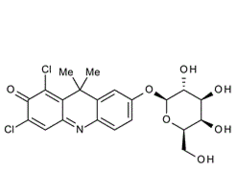

Glycoanalysis refers to the systematic study and characterization of glycans—complex carbohydrates or sugar molecules—within biological systems. This field is essential for understanding the structure, composition, and functions of glycans in various biological processes. Here are key aspects of glycoanalysis:
Glycan Profiling:
Definition: Glycan profiling involves the identification and quantification of the types and amounts of glycans present in a biological sample.
Methods: Techniques such as mass spectrometry, liquid chromatography, and capillary electrophoresis are used for glycan profiling.
Structural Analysis:
Characterization: Determining the detailed structure of glycans, including the types of monosaccharides, linkages, and branching patterns.
Techniques: Nuclear magnetic resonance (NMR) spectroscopy and tandem mass spectrometry are common methods for structural analysis.
Glycoprotein Analysis:
Identification: Characterizing glycosylation patterns of proteins, including the site-specific attachment of glycans.
Methods: Peptide mapping, glycopeptide analysis, and glycan release followed by mass spectrometry.
Glycomics:
Scope: Glycomics involves the global analysis of all glycans within a given biological sample or organism.
Approaches: High-throughput technologies and mass spectrometry-based techniques are employed for comprehensive glycomic studies.
Lectin Microarrays:
Principle: Utilizes arrays of lectins (carbohydrate-binding proteins) to profile and analyze the glycan content of a sample.
Applications: Enables high-throughput screening of glycan-lectin interactions.
Glycan Arrays:
Construction: Arrays of immobilized glycans used to study interactions with proteins, antibodies, and lectins.
Applications: Understanding glycan-protein interactions, including those involved in disease processes.
Glycosylation Site Analysis:
Identification: Determining the specific sites on proteins where glycans are attached.
Methods: Combining mass spectrometry with enzymatic or chemical approaches for site-specific glycosylation analysis.
Glycoengineering Analysis:
Evaluation: Assessing changes in glycan structures due to intentional modifications through glycoengineering.
Quality Control: Monitoring glycan profiles in biopharmaceuticals and therapeutic proteins.
Clinical Applications:
Biomarker Discovery: Glycoanalysis contributes to the discovery of glycan-based biomarkers for diseases.
Diagnostic Tools: Glycan analysis is used in developing diagnostic tools and assays for various health conditions.
Data Integration:
Bioinformatics: Analyzing and interpreting glycoanalytical data through bioinformatics tools.
Integration: Combining glycomics data with other omics data for a comprehensive understanding of biological systems.
Glycoanalysis is pivotal in unraveling the complexity of glycan structures and their functional roles in health and disease. It provides valuable insights into the molecular mechanisms underlying various physiological and pathological processes.